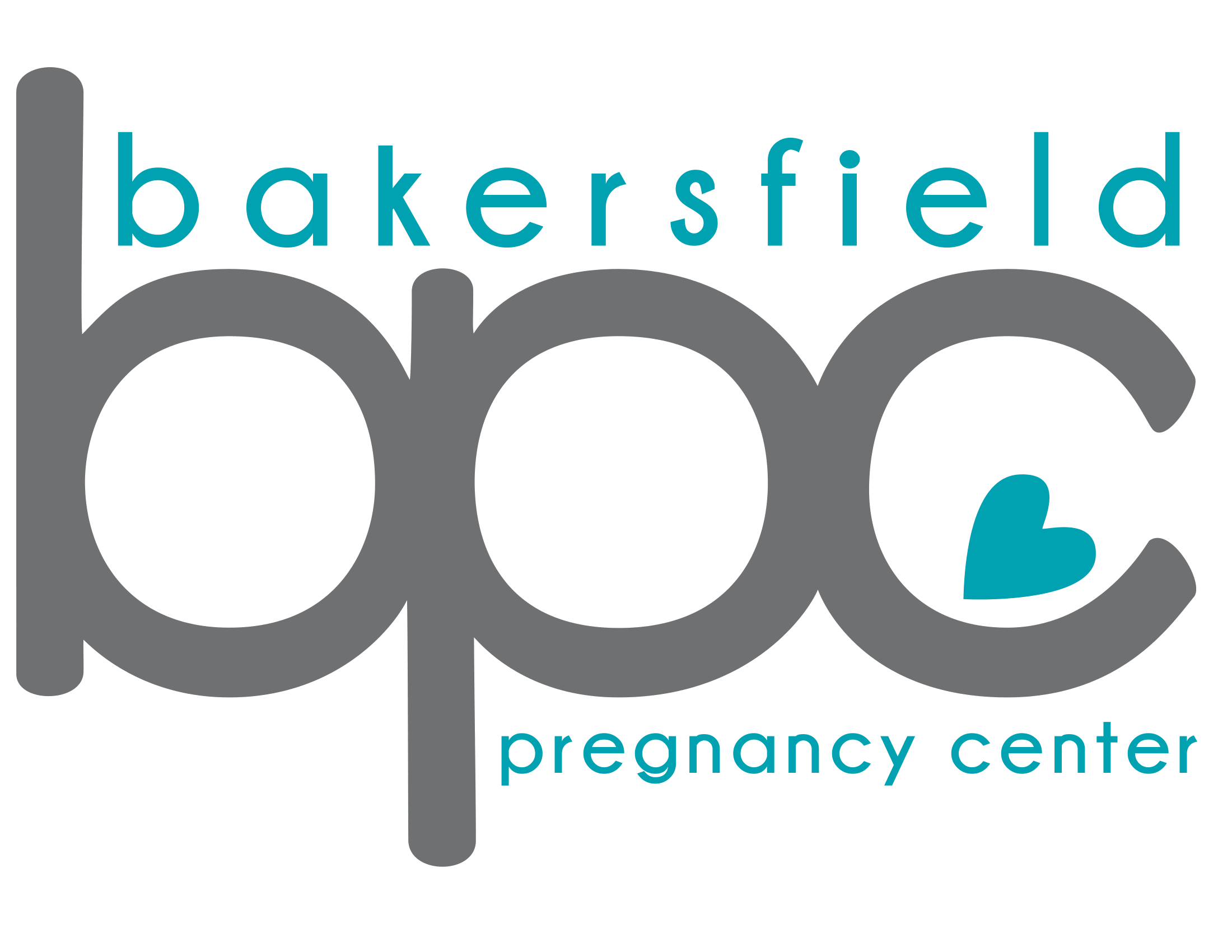If you’re further along in your pregnancy, you may be wondering if abortion is still an option for you. Is it safe when you’re farther along? Is it more painful than early-term abortion? It may feel like you have too many questions and not enough time.
Take a deep breath. Bakersfield Pregnancy Center is here to help! In this blog, we’re exploring late-term abortion, so you can make an informed and empowered decision! Keep reading to learn more!
What is Late-Term Abortion?
Late-term abortion refers to an abortion that is performed during the second trimester (14 to 26 weeks) or third trimester (27 to 40 weeks) of pregnancy.
Late-term abortions are rare, but they do happen. In 2021, 5.7% of abortions in the United States were performed between 14 to 20 weeks. 0.9% were performed at or beyond 21 weeks[1].
Are Late-Term Abortions Legal in California?
Currently, abortion is legal up until viability in California[2]. Viability refers to the point in pregnancy when a fetus is developed enough to survive outside the womb with medical help. Viability occurs at approximately 24 weeks of pregnancy[3].
However, there are currently no providers in Kern County, CA that perform late-term abortions.
If you’re considering traveling for a late-term abortion, receive a free ultrasound at Bakersfield Pregnancy Center to confirm how far along you are. We will help you explore all of your pregnancy options, so you can make the best choice for your health and future!
How are Late-Term Abortions Performed?
There are two late-term abortion procedures: dilation and evacuation (D&E) and labor induction abortion. The one you receive depends on how far along you are in your pregnancy.
Dilation and Evacuation (D&E)
Dilation and evacuations (D&E) are performed after 13 weeks and up to 24 weeks of pregnancy[3]. To begin, the doctor will dilate (open) the cervix, which can be done in one of three ways[3]:
- Shortly before the procedure, the doctor gives you medication to soften the cervix.
- Shortly before the procedure, the doctor inserts and removes metal rods to expand the cervix.
- The day before the procedure, the doctor inserts sponge-like sticks into the cervix. Over time, they will absorb moisture, expand, and open the cervix.
Once dilation is complete, the doctor will use forceps to remove the fetus and placenta. This procedure takes about 15 to 30 minutes[3].
Labor Induction Abortion
Labor induction abortions are performed after 16 weeks of pregnancy[4].
To begin, the doctor will numb your abdomen with a painkiller. They will then inject either digoxin or potassium chloride through your abdomen. This injection will travel through the uterus and into the amniotic fluid and fetus to stop the fetal heartbeat[4].
Next, the doctor will administer medication to start contractions, which will cause your cervix to dilate. Finally, misoprostol is taken to make the uterus cramp and expel the fetus, completing the abortion[4].
Is Late-Term Abortion Safe?
Both forms of late-term abortion come with risks and side effects, including:
- Nausea and vomiting[4]
- Fever and chills[4]
- Diarrhea[4]
- Abdominal pain[4]
- Heavy bleeding[3;4]
- Tears in the wall of the uterus[3;4]
- Injuries to the cervix[3;4]
- Infection[3;4]
- Failed induction[3;4]
If the induction fails, you may need a dilation and evacuation to complete the procedure[3;4]. It should also be noted that late-term abortion can be painful. Studies have found that women who received late-term abortions experienced more pain than they expected during their procedures[5].
Get the Facts on Late-Term Abortion at Bakersfield Pregnancy Center
We understand. Considering a late-term abortion may feel overwhelming and lonely. Bakersfield Pregnancy Center is a safe place to ask the hard questions, process your emotions, and get the care you deserve. We’re here to help you make the best decision for your health and future!
Call us at (661) 464-7653 or schedule your appointment online today. All services are confidential and free of charge!
Please be aware thatBakersfield Pregnancy Center does not provide or refer for abortion services.
Sources
- Abortion Surveillance—Findings and Reports. Centers for Disease Control and Prevention. (2023, November 21). https://www.cdc.gov/reproductivehealth/data_stats/abortion.htm
- Proclamation on Reproductive Freedom. (2019, May 31). https://www.gov.ca.gov/wp-content/uploads/2019/05/Proclamation-on-Reproductive-Freedom.pdf
- Dilation and Evacuation (D&E). Michigan Department of Health & Human Services. (n.d.). https://www.michigan.gov/mdhhs/adult-child-serv/informedconsent/michigans-informed-consent-for-abortion-law/procedures/dilation-and-evacuation-de
- Second Trimester Labor Induction Abortion. Michigan Department of Health & Human Services. (n.d.). https://www.michigan.gov/mdhhs/adult-child-serv/informedconsent/michigans-informed-consent-for-abortion-law/procedures/second-trimester-labor-induction-abortion
- Dzuba, I. G., Chandrasekaran, S., Fix, L., Blanchard, K., & King, E. (2022, May 12).Pain, Side Effects, and Abortion Experience Among People Seeking Abortion Care in the Second Trimester. Women’s Health Reports (New Rochelle, N.Y.). https://www.ncbi.nlm.nih.gov/pmc/articles/PMC9148646/
- Breborowicz, G. (2001, January).Limits of fetal viability and its enhancement. U.S. National Library of Medicine. https://pubmed.ncbi.nlm.nih.gov/11753511/

